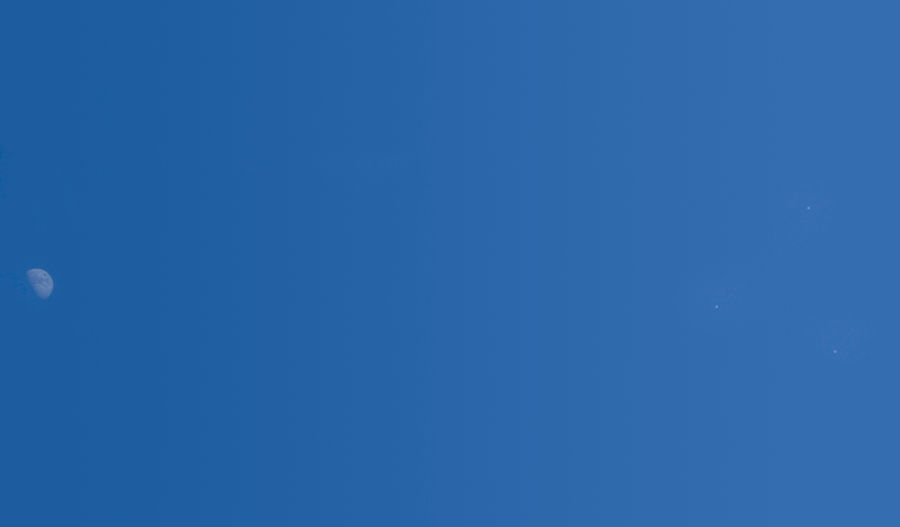
| Added | Mon, 10/10/2016 |
| Sources | |
| Феномены | |
| Version type |
Ordinary satellites, which often look like single, not very bright luminous dots moving smoothly in the night sky, are quite often mistaken for UFOs. After the Starlink satellites (near-Earth satellite systems developed by SpaceX, in order to create a cheap and high-performance satellite Internet communication channel and technical transmitters for receiving and transmitting signals from earth and orbit) were launched, it became possible to observe groups of satellites (up to 60 pieces) flying one after another.
But the Iridium outbreak is especially interesting. Often, a bright star-shaped object can be seen suddenly appearing in the night sky - very similar to a "shooting star", but not like a fussy meteor - moving gracefully and slowly fading, giving the observer time to consider its flight. This bright stroke in the sky is nothing more than the so–called Iridium flash, a phenomenon caused by the reflection of sunlight on the smooth surfaces of the antennas of the Iridium satellite communications system satellites. Some flashes are very bright — many reach a stellar magnitude of -8m. Flashes of such brightness can be observed even during the day, but they make the most impression at night. Some flashes are so bright that they can be seen through the rising fog and haze from forest fires. At the moment, the satellites of the Iridium system are the brightest star—shaped objects in the firmament when sunlight is reflected to the Earth.
The triangular UFOs can be mistaken for glare from the US NOSS (Naval Ocean Surveillance system) satellite system. They move in groups (often three subsatellites) at a distance of 30 to 240 km from each other, and eyewitnesses usually describe them as "moving constellations between which other stars are visible." Flashes also occur when sunlight is re-reflected. The first and second generation systems (three subsatellites) existed in orbit until 2012. The third generation satellites (two subsatellites each) were first launched on September 8, 2001. However, this does not mean that it is now impossible to see a system of three subsatellites in the sky. In early 2010, China launched the first NOSS-like triplet, which was almost identical in orbital inclination and height to the US NOSS.
At an altitude of 35,786 km above sea level, the speed of the satellites coincides with the speed of rotation of the Earth, and it seems that the satellites are hanging in place. They are calledGeostationary satellites of the Earth.
In spring and autumn, you can watch a star flare up and go out in the sky, and sometimes several (for example, in an arc, one after the other). These flashes are reflections of sunlight from geostationary satellites (GPS). The season of "flashes" of equatorial GSS falls on the time 3 weeks before the equinox and 3 weeks after. On these dates, the solar "bunny" reflected from the surface of the GPS, mainly from solar panels, and creating a bright spot on the Earth's surface with a diameter of about 350 km, will "highlight" 40-55 s.S. geographical latitudes. For an observer located at these latitudes, the flared satellite can increase its brightness to the second, first (for some GPS) magnitude and will be visible to the naked eye for 10-20 minutes. The center of the shadow with a radius of about 4 degrees (the diameter of the Sun and Moon near 1-2 degrees) will move along the equator, and during the night it will move along the zodiacal constellations from the east (in the evening after sunset) to the west (in the morning before sunrise). Under favorable conditions (the presence of a clear starry sky), "flashes" can be observed approximately every 4-7 minutes. The "standing" GPS in clusters such as "HotBird" (190 E), "Astra" (130 E), etc. look beautiful next to each other.
The speed of a satellite depends on its height, so you can observe satellites that move at different speeds. And if the orbit is not circular, but elliptical, then the speed also changes during one revolution.
A satellite that has failed may begin to rotate randomly in different directions and reflect sunlight, which may be perceived from Earth as an irregular flicker.
* A student at the University of Texas at Austin James Yoder created the Stuff in Space website, which displays the position of all satellites (blue dots), rocket hulls (red) and space debris (gray) orbiting the Earth.
Related facts
Related news
Related articles
Log in or register to post comments






















